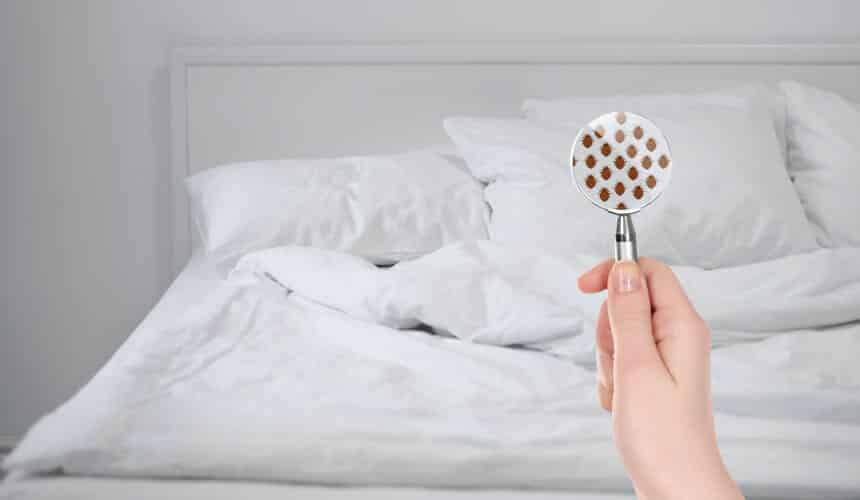Prep and Packing
A lot of times, when travelers begin to think about bed bugs, they have already departed their home and arrived at their destination. It is once they are in their hotel that they start to realize bed bugs could be a potential issue and then they start taking the precautions that they can. However, the most effective way to prevent a bed bug infestation is to actually prepare and place several precautions before ever leaving your own home.
A great way to prevent a complete outbreak of bed bugs in your home is to encase your mattress and box springs. Bed-bug-proof en-casements will protect your mattresses and box springs from becoming infested, in the case that bed bugs get introduced to your home, perhaps when coming back from your trip. In addition, these en-casements are typically white, making bug much more noticeable against them, increasing the chances of noticing a possible infestation earlier on and making it easier to treat.
Another great method of prevention is to install interception devices. Similar to ant traps or fly paper, these devices catch bed bugs around your home. By installing these and regularly checking them, your chances of noticing an infestation in its early stages are greatly increased. The earlier you catch a potential infestation, the easier it is to address.
When it comes to packing for your trip, using hard-shelled luggage as opposed to fabric luggage can help prevent bed bugs from making their home in your suitcases. As for the clothing that you’re bringing with you on your trip, keep in mind that clothes that can be dry cleaned or washed in hot laundry are the easiest to remove bed bugs from in case of contact with them. If you plan on bringing clothing that cannot be cleaned in either of those two ways, pack it in sealable plastic baggies to protect them. In addition, keeping large heavy-duty plastic bags in your car to place your luggage into on your trip back home can help prevent the transfer of bed bugs into your car or your home as well.

While You’re Away
When you first arrive at your accommodations for your trip, avoid placing your luggage near any upholstered furniture or on the bed. Keeping it on a tiled surface, or even in the bathroom for the entirety of your stay is the safest option, however, at least keep it in these areas until you have inspected the room. If your room includes a luggage rack, this is another safe option for storing your luggage as well.
Once you have safely stored your luggage away from potential bed bug hot spots, it’s important to take some time to look over the room before you get too settled in. Remove the sheets to inspect the edges of the mattress and box spring, especially paying attention to any marks or stains, shed skin, or even live bugs. Bed bugs are dark and typically the size of an apple seed, so they should not be hard to notice if you are looking for them.
As mentioned earlier, clothing and items that cannot be dry-cleaned or washed in hot laundry should already be packed in sealable plastic baggies, and this is where they should remain while that are not being used. Lastly, if you believe that bed bugs may be present in your room, immediately contact the hotel management and notify them of your suspicions so they can look into it further.
Returning Home
So you’ve finished your trip, and you’re returning home. You already have some prevention methods in place at your home, including the mattress en-casements and the bed bug interception devices. You also have your large plastic bags in your vehicle, in which to place your luggage before beginning the drive back, keeping any potential bed bugs confined to your luggage.
Once you have arrived back home, keep your luggage in the plastic bags until you are able to unpack them in a well-lit area that is away from furniture. Preferable areas include the garage, basement, or a tiled area such as a bathroom or kitchen where bugs would easily be spotted in the chance they traveled back in your luggage with you.
After unpacking and containing your clothing to a safe area, immediately laundering them will prevent any unwanted transfer of bed bugs to other areas of your home. Using a hot dry cycle is most effective, so placing clean clothing directly into the dryer without washing will address potential bugs efficiently. For clothes that you are planning on washing, using a hot wash cycle and then drying them is effective as well.
At this point, you have successfully completed all the steps of prevention and precautions that you can take. It is important to stay on top of inspecting your home for signs of an infestation. If you do notice any suspicious activity, stains or marks on your mattress encasement, or experience any itchy reactions, contact Tri-X Pest Management, and we will make a visit to your home to further inspect and determine the best course of action. Call us at (702) 533-6419 or send a message on our contact page to schedule a free inspection today..

